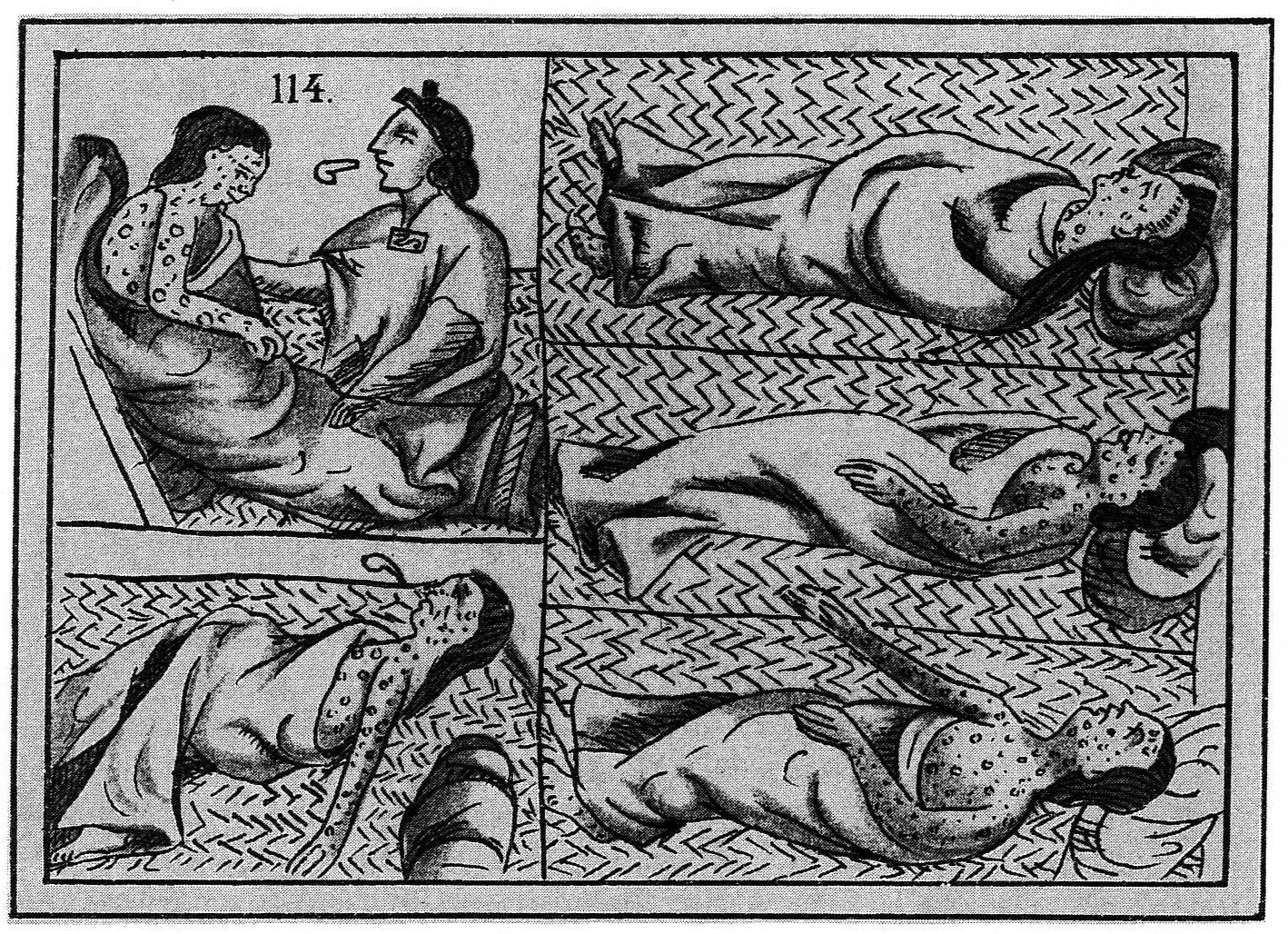| |
Introduction
When Berdardino de Sahagún, a Franciscan friar who came to Mexico in 1529 as one of the first Spanish missionaries, learned the Aztec language, his superiors directed him to compile a record in Nahuatl of Aztec history and customs. The Spaniards hoped to use the information in his record to convert the Indians to Catholicism. Sahagún transcribed the Historia General de las Cosas de la Nueva Españia ("General History of the Things of New Spain," also known as the Florentine Codex) as it was told to him by Aztec elders who had witnessed the events that led to the fall of Tenochtitlán. Sahagún is regarded as a sensitive recorder and translator of the Aztec stories, but it is important to keep in mind that the words you read below have been transferred to paper through the pen of a Spanish interpreter. The document was produced by the victors and must be used with caution, although Sahagún's account is the closest we come to reading about the events of 1519 to 1521 as the Aztecs understood and responded to them.
The Aztec account of the conquest of Mexico is found in Book XII of the Florentine Codex. Much of the book is a tale of the arrival of the Spaniards in Tenochtitlán, the encounter with Moctezuma, the roust of the small band of conquistadors, and the siege and fall of the Aztec capital city. Even in this one chapter describing the appearance of smallpox in the fall of 1520, the war against the invading Spaniards remained the central theme.
Part A below consists of the Aztec description of the epidemic. Part B is an image from the Florentine Codex, a pictorial account of what happened.
Questions to Consider
-
How did the Aztec elders describe the epidemic? (Do you think "plague" was an Aztec term?) As presented here, how frightful was the event for the inhabitants of Tenochtitlán?
-
How does the Aztec account compare to that of the "first plague" described by Motolinía?
-
Why do you think people died of "famine" during this epidemic?
-
What story does the image of the epidemic tell? What does the pictorial story add to the written description?
-
In what ways do the Smallpox Factsheet and Photographs help you interpret Sahagún's account of the Aztec experience in 1520?
Document
Part A
Twenty-ninth Chapter, in which it is told how there came a plague, of which the natives died. Its name was smallpox. It was at the time that the Spaniards set forth from Mexico.
But before the Spaniards had risen against us, first there came to be prevalent a great sickness, a plague. It was in Tepeilhuitl that it originated, that there spread over the people a great destruction of men. Some it indeed covered [with pustules]; they were spread everywhere, on one's face, on one's head, on one's breast, etc. There was indeed perishing; many indeed died of it. No longer could they walk; they only lay in their abodes, in their beds. No longer could they move, no longer could they bestir themselves, no longer could they raise themselves, no longer could they stretch themselves out face down, no longer could they stretch themselves out on their backs. And when they bestirred themselves, much did they cry out. There was much perishing. Like a covering, covering-like, were the pustules. Indeed many people died of them, and many just died of hunger. There was death from hunger; there was no one to take care of another; there was no one to attend to another.
And on some, each pustule was placed on them only far apart; they did not cause much suffering, neither did many die of them. And many people were harmed by them on their faces; their faces were roughened. Of some, the eyes were injured; they were blinded.
At this time this plague prevailed indeed sixty days — sixty day-signs — when it ended, when it diminished; when it was realized, when there was reviving, the plague was already going toward Chalco. And many were crippled by it; however, they were not entirely crippled. It came to be prevalent in Teotleco, and it went diminishing in Panquetzaliztli. At that time the Mexicans, the brave warriors were able to recover from the pestilence.
And when this had happened, then the Spaniards came. They moved there from Texcoco; they went to set forth by way of Quauhtitlan; they came to settle themselves at Tlacopan. There the responsibilities were then divided; there, there was a division. Pedro de Alvarado's [a lieutenant of Cortés] responsibility became the road coming to Tlatilulco. And the Marquis [Cortés] went to settle himself in Coyoacan, and it became the Marquis's responsibility, as well as the road coming from Acachinanco to Tenochtitlan. The Marquis knew that the man of Tenochtitlan was a great warrior.
And in Nextlatilco, or Ilyacac, there indeed war first began. There [the Spaniards] quickly came to reach Nonoalco. The brave warriors came following after them. None of the Mexicans died. Then the Spaniards turned their backs. The brave warriors waged war in boats; the shield-boatmen shot arrows at them. Their arrows rained upon the Spaniards. They entered [Nonoalco]. And the Marquis thereupon threw [the Spaniards] toward those of Tenochtitlan; he followed along the Acachinanco road. Many times he fought, and the Mexicans contended against him.
Part B

(click to enlarge)
Source:
Fray Bernardino de Sahagún, General History of the Things New Spain, Arthur J. O. Anderson and Charles E. Dibble, trans, book 12, "The Conquest of Mexico" (Santa Fe: School of American Research and the University of Utah, 1975), XXXX.
Next >>>
<<< Return to Evidence
|